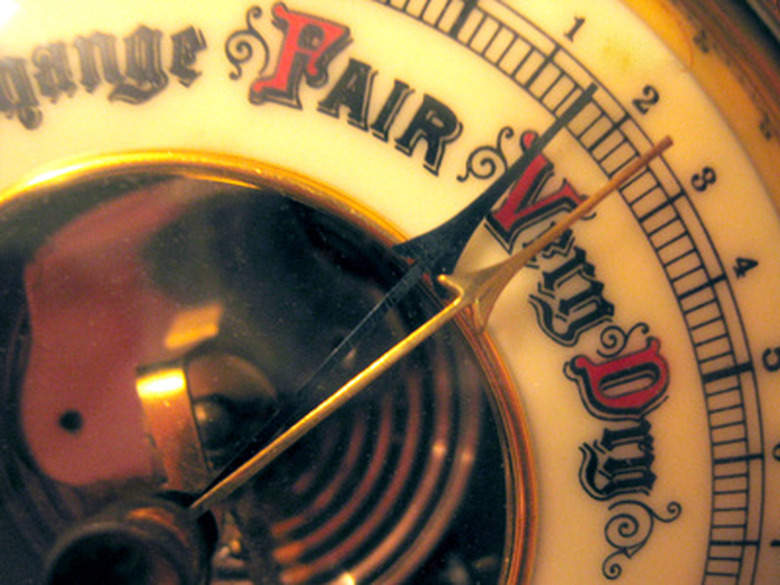Proper Placement Of Barometers
You can use a barometer to help anticipate the weather in your area. Changes in the air pressure can give you an idea about whether you should expect rain or sun in the coming hours or days. Many barometers are finely crafted and can make a great addition to your home's décor. Many people worry about where to place their barometer for fear that some placements could lead to an inaccurate forecast.
Stability
Knocks and falls can disrupt the performance of you barometer, so stability is an important consideration when choosing a location. Make sure that if you hang it on a wall, the hanger is sturdy and won't pull free. If you set the barometer on a tabletop or shelf, make sure it's placed to minimize the chances of it getting knocked over.
Inside Wall or Outside Wall
It might seem as though choosing an inside wall over an outside wall would make a difference in your barometer's accuracy, because outside walls experience greater temperature fluctuations. However, the professionals at Medford Clock say that the temperature variations between an inside wall and outside wall aren't significant enough to disrupt the pressure reading. The pressure inside your home and outside your home is the same.
Heat Sources
While an inside or outside wall won't make a difference in your barometer's performance, placing it too near a heat source may. Situate your barometer so that it is not near a heating vent or sitting in direct sun. This is especially important if your barometer is also a combination thermometer.
Proper Movement
If you need to relocate your barometer, it's important that you move it properly. There are two kinds of barometers. One uses mercury, a hazardous material, to measure pressure. If you have a mercury barometer, you must use special care when moving it. First tip it slowly to a 50-degree angle so that the mercury reaches the top of the tube. Then carry it carefully to its new location. You should never lay a mercury barometer flat. The other type of barometer is an aneroid barometer and does not require special handling. A mercury barometer is a least 32 inches tall and has a small door to give access to the mercury tube. If your barometer isn't this big, or it doesn't have a door on the back, it is an aneroid barometer.
Optimum Placement
The optimum placement for your barometer really depends on your personal taste. Find a place where you will enjoy seeing it and where you will use it regularly.
